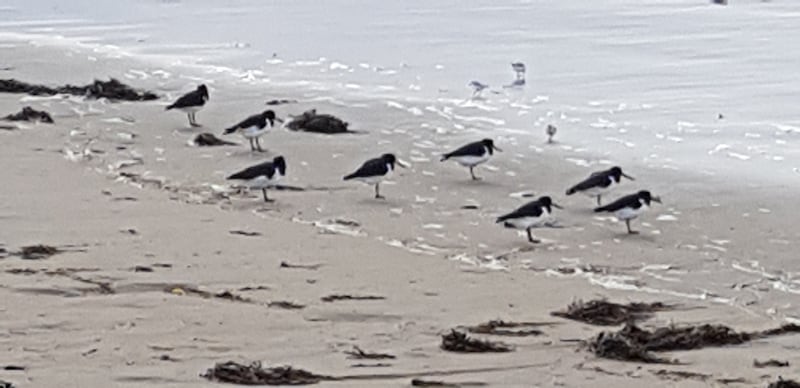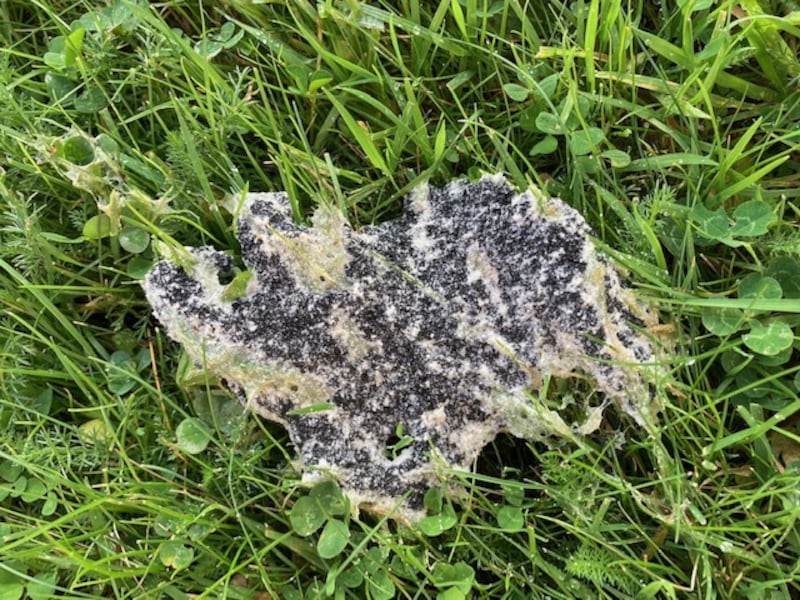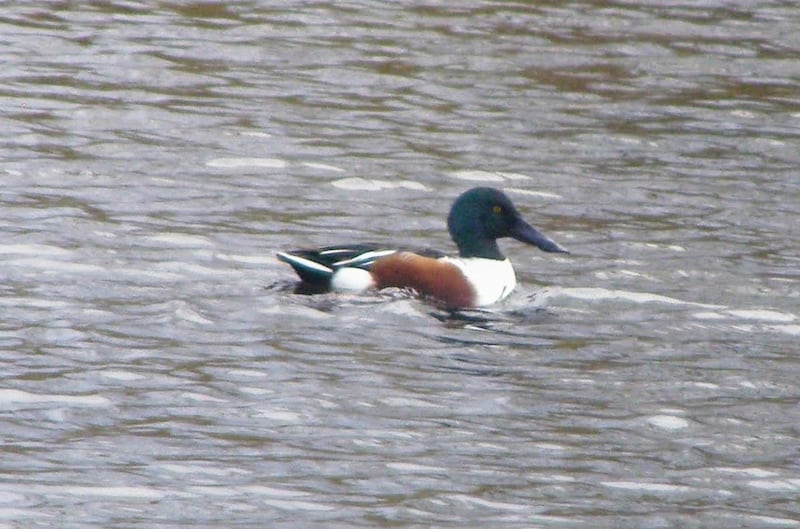I found this insect on my homework sheet. Please tell me what it is and if it is poisonous. Eoin Seaward, Holywood, Co Down
This is the larva of the orange ladybird, which is an orange ladybird with 12-16 white spots. These feed primarily on mildews and overwinter as adults. The yellow and black of the larva is a deterrent to would-be predators.

Oystercatchers on one leg on Ballyheigue strand, Co Kerry. Are they tucking one leg in to keep warm? Bryan MacMahon
Wading birds like these oystercatchers can make a heat transfer from the warm descending blood in the leg artery to the cold ascending blood in the leg vein. Still, tucking up one leg avoids the need for this in both legs and, I suppose, every little helps in bitterly cold weather.
READ MORE

Some weeks ago these patches appeared on the grass in our back garden. They looked like an animal had vomited on the grass. After a few days, the frothy appearance died down and a dark green structure was left behind. Could it be some kind of fungus? Jacinta McLoughlin, Co Meath
Not a fungus but a slime mould called dog’s vomit. Usually only pictures of the initial stage of this are sent in, but your excellent picture shows the spore stage. Millions of tiny spores are produced and blown away by the wind to grow into more slime mould under the ground.

What is this growth on a nearby poplar? It looks like the witches’ brooms that appear on silver birch. Molly McGuigan, Pollbrock, Co Louth
Witches’ brooms occur when the growth of a lateral bud on a tree branch goes out of control and causes multiple stems to form in a tangled, disorganised manner. They are caused by micro-organisms such as fungi, bacteria or viruses and, while often seen on silver birch, can occur on other species of trees.

I spotted this shoveler on Castletown House pond. I originally thought it was a goosander as it was a bit out of the ordinary compared with our mallards. John Smith, Co Kildare
Male shovelers have distinctive chestnut-coloured sides and an enormous shovel-like bill.
Please submit your nature query, observation or photo, with a location, via www.irishtimes.com/eyeonnature















